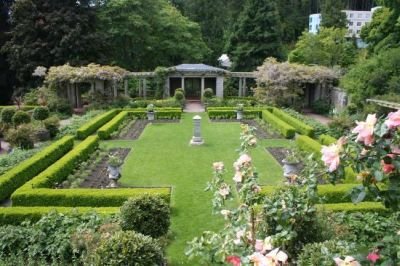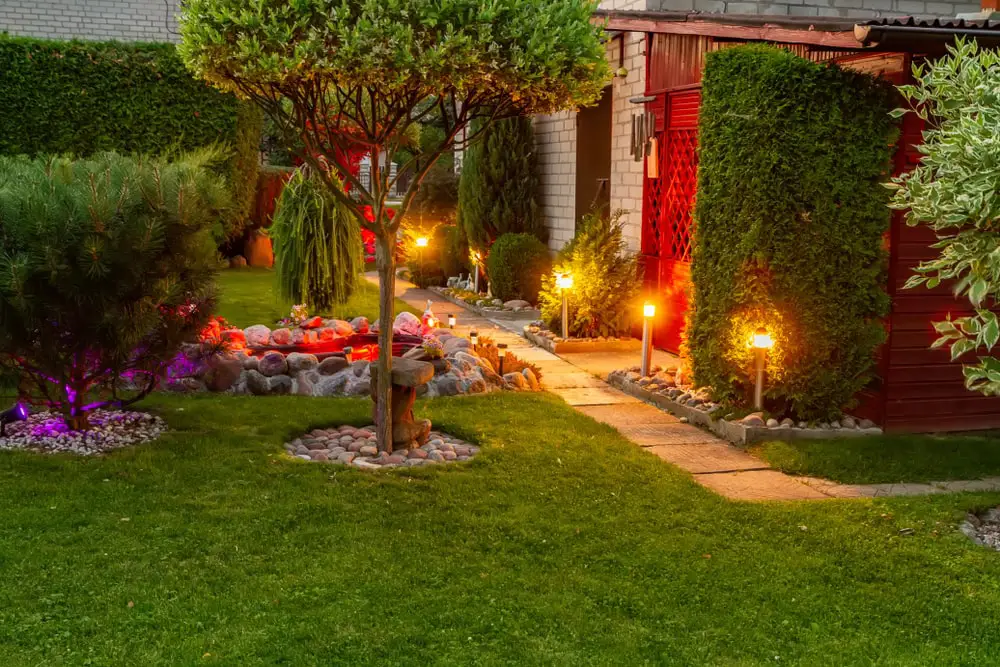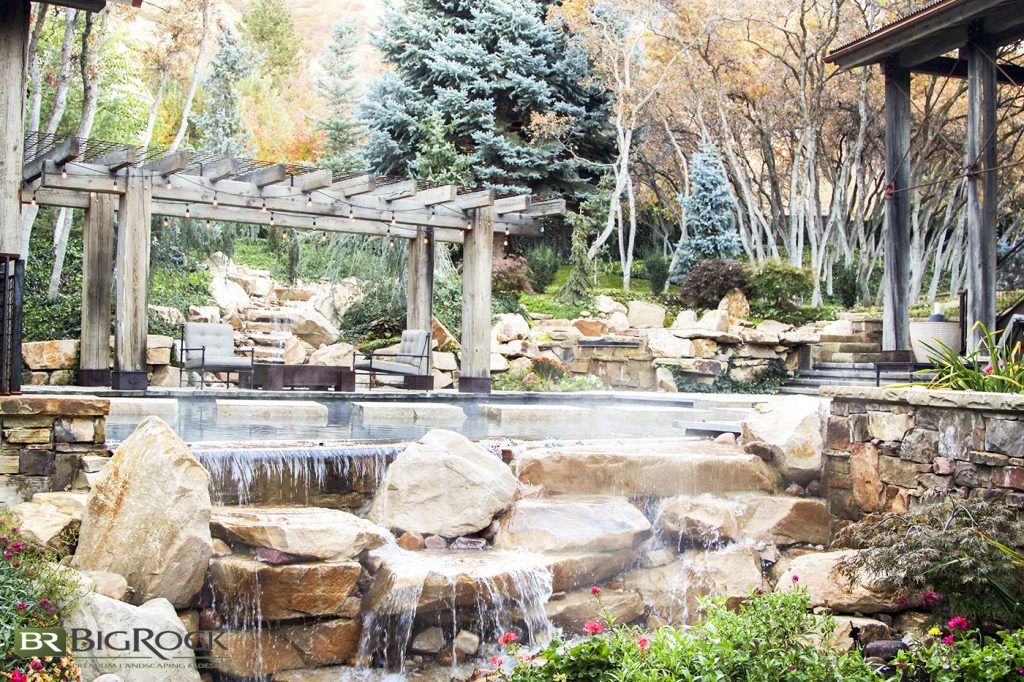The Buzz on Hilton Head Landscapes
Wiki Article
Some Known Details About Hilton Head Landscapes
Table of ContentsNot known Details About Hilton Head Landscapes The smart Trick of Hilton Head Landscapes That Nobody is Talking AboutThe Ultimate Guide To Hilton Head LandscapesLittle Known Questions About Hilton Head Landscapes.An Unbiased View of Hilton Head LandscapesHilton Head Landscapes Can Be Fun For AnyoneUnknown Facts About Hilton Head LandscapesThe 9-Minute Rule for Hilton Head Landscapes
Kind compatibility is also a significant part of unity in designone or more noticeably various forms benefit comparison and emphasis, but typically all various other forms must have some similarities for an unified look. Appearance refers to exactly how coarse or fine the surface of the plant or hardscape material really feels and/or looks.
Examples of plants with crude structure consist of philodendrons, agaves, bromeliads, hollies, hands, and hydrangeas. Hardscape with coarse structure consists of rough-cut rock, rough-finished brick, and unfinished timber with knots and an increased grain. Matured or old building product that maintains a weather-beaten surface is often crude in appearance. Qualities that produce fine appearance include little vegetation; thin, strappy leaves (yards) or high, slim stems; small, thick twigs and small branches; long stems (creeping plants); and small, fragile flowers.
Fascination About Hilton Head Landscapes
Most plants are medium structure, in that they can not be called having either coarse or great texture. They are defined by medium-sized fallen leaves with easy shapes and smooth edges. The average-sized branches are not densely spaced neither extensively spaced, and the total form is typically rounded or mounding. Medium-textured plants function as a background to web link and link the coarse- and fine-textured plants.
To make a room feel smaller, position the crude appearances along the external border and the fine structures closest to the viewer. The detail of the coarse structure makes the plants show up closer and makes the room feel smaller sized. The viewed structure of plants can likewise alter with the range from the plant.
Hilton Head Landscapes Fundamentals Explained
Vibrant shades boost the comparison and make the texture appear coarser, while soft shades can flatten texture. Hardscape with a rugged texturesuch as really rough rocks and bold, huge timberstends to make all plant product appear extra average distinctive. Designers frequently establish a texture study (Number 8) on paper to aid decide the setup of plant materials.Color in plant product and hardscape adds rate of interest and selection to the landscape. Color is the most conspicuous aspect in the landscape and is generally the focus of most house owners; however, it is also the most temporary component, typically lasting just a couple of weeks a year for specific plants.
About Hilton Head Landscapes
A basic summary of the color wheel consists of the 3 primaries of red, blue, and yellow; the three second shades (a mix of 2 primaries) of green, orange, and violet; and six tertiary shades (a mix of one surrounding key and second color), such as red-orange. Shade concept discusses the relationship of shades per other and exactly how they must be used in a composition.
Similar (sometimes called harmonious) color design are any kind of 3 to five shades that are nearby on the color wheel, such as red, red-orange, orange, yellow-orange, and yellow, or blue, blue-violet, and violet Bonuses (hilton head landscapers). The shades are relevant to each various other due to the fact that they typically consist of 2 key colors mixed to form a second and 2 tertiary shades, which means they share typical properties
Complementary colors are frequently found normally in blossoms; a typical set is yellow and violet. Color is located in the blossoms, vegetation, bark, and fruit of plants.
Hilton Head Landscapes Fundamentals Explained
Environment-friendly foliage in all its different shades is the dominant shade by quantity, yet other shades record attention quicker due to their high contrast to the color green. Color is also discovered in structures, rocks, pavers, wood, and furnishings. Many colors in all-natural materials, such as rock and timber, are usually low-key and have a tendency to be variants of brown, tan, and pale yellow.Colors have residential properties that can affect feelings, spatial perception, light quality, equilibrium, and emphasis. Trendy shades have a tendency to be calming and must be utilized in areas for leisure and serenity.
Indicators on Hilton Head Landscapes You Need To Know
The "temperature level" of shades can additionally impact the understanding of range. Cool colors tend to decline and are regarded as being further away, making a space really feel bigger. Warm colors have a tendency to advance and are perceived as being more detailed, making a space feel smaller. Shade can also be used to capture interest and straight views.For instance, bright yellow, which has the highest intensity, also has a high contrast with all other shades (frequently called a "pop" of shade) and need to be made use of sparingly. A tiny quantity of intense color has as much aesthetic weight as a huge amount of a more controlled or weak shade.
Comparable (in some cases called harmonious) color pattern are any 3 to five shades that are surrounding on the color wheel, such as red, red-orange, orange, yellow-orange, and yellow, or blue, blue-violet, and violet. The shades belong to each other due to the fact that they typically include 2 primaries mixed to create an additional and 2 tertiary colors, which means they share usual buildings.
Hilton Head Landscapes Fundamentals Explained
Corresponding colors are commonly located normally in flowers; a typical pair is yellow and violet. Shade is found in the blossoms, vegetation, bark, and fruit of plants.Green foliage in all its different shades is the dominant shade by amount, however other shades catch attention quicker because of their high contrast to the color green - Landscapers near me - https://slides.com/h1tnhdlndscps. Shade is likewise found in structures, rocks, pavers, wood, and furnishings. Most shades in natural products, such as rock and wood, are usually low-key and often tend to be variants of brownish, tan, and pale yellow
The 8-Second Trick For Hilton Head Landscapes
Shade is a crucial element for developing interest and variety in the landscape. Colors have properties that can affect emotions, spatial assumption, light quality, balance, and emphasis. One residential or commercial property of shade is explained about temperaturecolors seem amazing or warm and can impact emotions or sensations. Trendy shades have a tendency to be relaxing and need to be made use of in locations for leisure and serenity.Trendy shades tend to decline and are regarded as being farther away, making a room feel larger. Color can also be made use of to catch attention and straight views - https://dc-washington.cataloxy.us/firms/www.hiltonheadlandscapes.com.htm#google_vignette.
For instance, bright yellow, which has the greatest strength, additionally has a high comparison with all various other shades (often referred to as a "pop" of color) and must be made use of moderately. A percentage of extreme shade has as much aesthetic weight as a big amount of an extra subdued or weak shade.
Report this wiki page